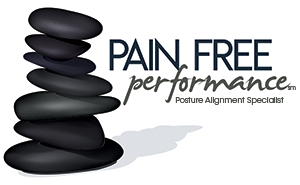I have spent the last eight years of my life devoted to postural alignment after a career in physical therapy and fitness. I understand the body, injury, rehab and alignment. As a Postural Alignment Specialist certified through Egoscue University, I know the amazing benefits of this work and the direct correlation to pain elimination, prevention and optimal health on every level. I live it every day as a pain management clinic owner helping clients get out of pain. I know with certainty that medical intervention, including medication and surgery can often be avoided or postponed. However, this summer I am struggling with how to proceed with my own son’s shoulder injury and rehabilitation.
My son is in high school. Last fall while playing football, he was hit and his right shoulder dislocated. For those of you who may never have witnessed this, it’s not pretty and the pain is excruciating until the shoulder is “popped” back in. He went to the Emergency Room where they gave him pain medication and put the shoulder back in place then sent him back to school in a sling. He worked with the Athletic Trainer at school and was back playing football. Yay, right? During the first week of summer vacation, he jumped in the pool and dislocated the same shoulder again. We were back in the Emergency Room, same story.
I believe that the reason his shoulder is prone to dislocation is because of his poor posture. He has a forward head, shoulders that are rounded forward, an upper back that is also rounded and the only curve in his spine is in his neck because of his forward head. His pelvis tucks under, which flattens that needed lower back curve and also hinges his shoulders forward. Any kind of stress on his arm or shoulder causes the shoulder to dislocate because it’s the only place it can go!
Ideally, postural alignment therapy is the answer to my son’s malady. After his injury, I had him in to see my colleague Mackie. Mackie, who is also Egoscue University certified and worked alongside Pete Egoscue for a number of years, gave him a sequence of exercises that repositioned his pelvis and changed his shoulder position to make sure that all of the muscles that interconnect the pelvis and shoulder are working. My son felt much better and looked much better. It’s not a quick fix because he’s been stooped over a computer doing homework and playing computer games for most of his life, which created the posture. He needs to commit to the prescribed postural alignment program for the long term. Sounds like a good plan?
The trick is, I’m dealing with a teenager! He’s young, strong, he’s a great athlete, he’s busy and he’s not in pain. He feels “fixed”. Have you ever tried to get your teenager to stay consistent with a therapeutic exercise program when they have no pain? It will take time to reposition his skeletal system…probably not enough time before football season begins again.
Research shows that some 85% of people who dislocate their shoulders playing sports at a young age will continue to dislocate them. Usually the labrum (soft tissue) and the ligaments which keep the shoulder stable get torn or over-stretched causing an unstable shoulder. All of my best shoulder resources are telling me that he needs to have surgery to avoid further dislocations. Having the surgery, which will tighten the ligaments and hold the shoulder in place, will certainly fix the problem for now but it will not be without risks. The surgery may leave him with a shoulder that is “frozen” in place without full range of motion, muscles could start compensating creating back issues and someday he may even need a shoulder replacement. I have seen this in my practice and it is not something I want for my son.
We still have not decided exactly what course of action to take. My son is a young athlete who wants desperately to finish his senior year playing with his high school football team. We could schedule surgery and he might not be able to play at all, we can wait and see and risk another dislocation, we can encourage daily alignment exercises and also risk another dislocation if he is not compliant or does not respond in time.
Ultimately this is a group decision between my husband, my son and I. No matter what we decide, eventually there may come a time where my son will understand how important it is to keep the body in alignment. The human body functions as a unit and surgery will stabilize my son’s shoulder but it will not correct the disparity in his pelvis. Untreated, that disparity will continue to affect every part of his body, even his shoulder. Eventually, poor posture catches up with all of us. I only wish I could get him to understand the implications now!
Cindy Meyers, PTA, PAS
